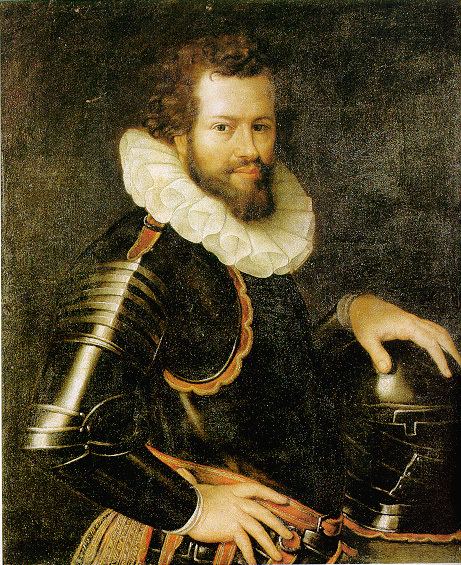Predecessor Alessandro Role Duke of Parma Name Ranuccio Farnese, | House House of Farnese Successor Odoardo Siblings Odoardo Farnese | |
 | ||
Reign 3 December 1592 – 5 March 1622 Born 28 March 1569
Parma, Parma ( 1569-03-28 ) Consort Margherita Aldobrandini Issue Prince Ottavio
Maria, Duchess of Modena and Reggio
Odoardo, Duke of Parma
Vittoria, Duchess of Modena
Cardinal Francesco Maria Died March 5, 1622, Parma, Italy Spouse Margherita Aldobrandini (m. 1600–1622) Children Odoardo Farnese, Duke of Parma Parents Alexander Farnese, Duke of Parma, Infanta Maria of Guimaraes Similar People Alexander Farnese - Duke of P, Ottavio Farnese - Duke of P, Margherita de' Medici, Margaret of Parma, Margherita Farnese | ||
Ranuccio I Farnese (28 March 1569 – 5 March 1622) reigned as Duke of Parma, Piacenza and Castro from 1592. A firm believer in absolute monarchy, Ranuccio, in 1594, centralised the administration of Parma and Piacenza, thus rescinding the nobles' hitherto vast prerogative. He is best remembered for the "Great Justice" of 1612, which saw the executions of a large number of Piacentine nobles suspected of plotting against him. Because one of the conspirators, Gianfrancesco Sanvitale, falsely implicated several Italian princes, namely Vincenzo Gonzaga, Duke of Mantua and Cesare d'Este, Duke of Modena, in the plot, Vincenzo and Cesare's names appeared on the list of conspirators during formal court proceedings; as a result, Ranuccio's reputation among the rulers of Italy was irreparably damaged because it was evident that he gave credence to Gianfrancesco's obviously false confession. When, consequently, in the early 1620s, Ranuccio was looking for a bride for his younger legitimate son and heir, Odoardo, none of the Italian ruling families were forthcoming with princesses. He did, however, manage to engineer a match with Margherita de' Medici, daughter of Cosimo II of Tuscany.
The husband of Margherita Aldobrandini, niece of Pope Clement VIII, Ranuccio, the son of a Portuguese infanta, was considered as a potential king of Portugal when his childless great-uncle King Henry I died. The throne, however, passed to Philip II of Spain, whose troops had promptly occupied the country after Henry I's death.
His great-uncle Henry I of Portugal's death triggered the struggle for the throne of Portugal when Ranuccio was 11 years old. As the son of the late elder daughter of Infante Edward, 4th Duke of Guimarães, the only son of King Manuel I whose legitimate descendants survived at that time, Ranuccio was according to the feudal custom the first heir to the throne of Portugal. However his father was an ally and even a subject of the Spanish king, another contender, so Ranuccio's rights were not very forcibly claimed. Instead, Ranuccio's mother's younger sister Catherine, Duchess of Braganza, claimed the throne, very ambitiously, but failed.
Under Ranuccio I's rule, the dukedom annexed the territories of Colorno, Sala Baganza, and Montechiarugolo. He guided a cultural renewal in the city of Parma, supporting the arts and constructing the 4,500 seat Farnese Theater. Numerous improvements and monuments in Parma were constructed under Ranuccio I at his behest, including a revitalization of the University of Parma and the final expansion of the city walls. Construction of the Palazzo della Pilotta, the court palace of the Farnese family, was completed in 1620.
Ranuccio was succeeded by his son Odoardo, initially under the regency of Ranuccio's brother, Odoardo Farnese.
Issue
He married Donna Margarita Aldobrandini—the daughter of Don Giovanni Francesco Aldobrandini, Prince of Carpineto and his wife the heiress Donna Olimpia Aldobrandini, Princess Campinelli—on 7 May 1600 in Rome, St. Sixtus. The couple had nine children:
